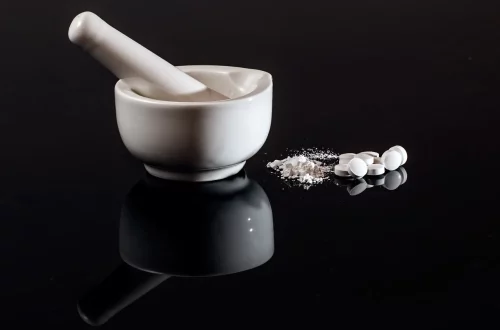
Persistent Knot in Shoulder Blade: Causes and Effective Remedies
Persistent discomfort in the shoulder blade can be a source of frustration for many individuals. This bothersome sensation often manifests as a persistent knot or tightness that can inhibit daily activities and diminish overall quality of life. The shoulder blade, or scapula, plays a crucial role in the mobility and stability of the upper body, connecting the arm to the torso. Tension or discomfort in this area may arise from various factors, ranging from muscle strain to poor posture, and even emotional stress.
Understanding the underlying causes of shoulder blade knots is essential for effective treatment and relief. Many people may find themselves unaware of the daily habits or activities contributing to their discomfort. Factors such as prolonged sitting, repetitive movements, or even stress can lead to muscle tension and tightness. As individuals navigate through their busy lives, it becomes increasingly important to prioritize self-care and pay attention to bodily signals that indicate the need for rest and recovery.
In this article, we will explore the causes of persistent knots in the shoulder blade and offer effective remedies to alleviate discomfort. By addressing both the physical and environmental factors contributing to this condition, individuals can take proactive steps toward achieving better shoulder health and overall well-being.
Common Causes of Shoulder Blade Discomfort
Understanding the root causes of discomfort in the shoulder blade is crucial for effective treatment. Various factors can contribute to the formation of persistent knots in this area, ranging from physical strain to emotional stress.
One of the most common causes is poor posture, particularly in today’s digital age where many individuals spend hours hunched over computers or smartphones. Prolonged periods of sitting with a rounded back can lead to muscle imbalances, causing tension in the muscles surrounding the shoulder blades. This tension can create knots that feel uncomfortable or painful.
Another significant factor is muscle overuse. Engaging in repetitive activities, such as lifting heavy objects, playing sports, or performing manual labor, can put excessive strain on the shoulder muscles. Over time, this strain can lead to muscle fatigue and the development of knots. Additionally, individuals with a sedentary lifestyle may experience tightness due to a lack of movement, causing muscles to stiffen and become more prone to knots.
Stress and emotional tension are also key contributors to shoulder blade discomfort. When individuals experience stress, their bodies often respond by tensing up, leading to muscle tightness in various areas, including the shoulders. This tension can create knots that may persist if not addressed through relaxation techniques or physical therapy.
In some cases, underlying medical conditions may contribute to shoulder blade discomfort. Conditions such as herniated discs, arthritis, or fibromyalgia can cause referred pain in the shoulder blade region. It’s essential for individuals experiencing persistent pain to consult a healthcare professional to rule out any underlying conditions.
By recognizing these common causes, individuals can take informed steps to alleviate discomfort and prevent future occurrences.
Effective Home Remedies for Relief
When dealing with persistent knots in the shoulder blade, several effective home remedies can provide relief and promote healing. These remedies focus on relieving muscle tension, improving flexibility, and enhancing overall shoulder health.
One of the simplest and most effective remedies is applying heat or cold to the affected area. Heat therapy, such as using a warm compress or heating pad, can help relax tight muscles and improve blood circulation. On the other hand, cold therapy, like ice packs, can reduce inflammation and numb sharp pain. Alternating between heat and cold can provide comprehensive relief.
Gentle stretching and targeted exercises can also be beneficial in alleviating shoulder blade discomfort. Incorporating stretches that focus on the shoulders, neck, and upper back can improve flexibility and reduce tension. For instance, simple neck stretches, shoulder rolls, and arm circles can help release tightness in the shoulder area.
Massage therapy is another effective remedy that can significantly reduce muscle knots. Self-massage techniques, such as using a tennis ball against a wall or foam rolling, can target specific areas of tightness. If possible, seeking professional massage therapy can provide deeper relief and address muscle imbalances more effectively.
Additionally, practicing mindfulness and relaxation techniques can help reduce stress-related tension. Activities such as yoga, meditation, or deep breathing exercises can promote relaxation and alleviate the emotional stress that often contributes to shoulder blade discomfort.
Incorporating these home remedies into a daily routine can lead to significant improvements in shoulder health and overall well-being. However, it’s important to listen to the body and avoid pushing through pain, as this can exacerbate the issue.
When to Seek Professional Help
While many cases of shoulder blade discomfort can be managed with home remedies, there are instances when seeking professional help is necessary. Recognizing the signs that indicate the need for medical intervention is crucial for preventing further complications.
If the pain persists despite home treatment or worsens over time, it’s essential to consult a healthcare professional. Persistent pain may be a sign of an underlying condition that requires medical evaluation and intervention. Additionally, if the discomfort is accompanied by other symptoms, such as numbness, tingling, or weakness in the arms or hands, seeking medical attention is imperative.
Individuals with a history of injury or trauma to the shoulder area should also consider professional evaluation. Injuries such as fractures, dislocations, or severe sprains can lead to chronic pain if not properly assessed and treated.
Furthermore, if the discomfort significantly interferes with daily activities, such as work, exercise, or sleep, it may be time to consult a healthcare provider. Chronic pain can impact overall quality of life, and addressing it promptly can lead to more effective management strategies.
Healthcare professionals may recommend various treatment options, including physical therapy, chiropractic care, or medication to alleviate pain and promote healing. They can also provide personalized advice on lifestyle changes and exercises tailored to individual needs.
In summary, while many cases of shoulder blade discomfort can be addressed at home, understanding when to seek professional help is crucial for long-term relief and recovery.
Preventive Measures for Long-Term Relief
Preventing discomfort in the shoulder blade region is just as important as finding effective remedies. Implementing preventive measures can significantly reduce the risk of developing persistent knots and promote overall shoulder health.
One of the most effective preventive measures is maintaining good posture. Being mindful of body alignment while sitting, standing, or engaging in physical activities can alleviate unnecessary strain on the shoulder muscles. Ergonomic workstations, lumbar support, and regular breaks from prolonged sitting can all contribute to better posture and reduced tension.
Incorporating regular physical activity into a daily routine is another essential preventive step. Engaging in exercises that strengthen the shoulder muscles and improve flexibility can help maintain a balanced musculoskeletal system. Activities like swimming, yoga, or resistance training can be particularly beneficial for shoulder health.
Additionally, managing stress through relaxation techniques can significantly impact shoulder tension. Finding healthy outlets for stress, such as engaging in hobbies, spending time in nature, or practicing mindfulness, can help reduce emotional strain and its physical manifestations.
Lastly, being aware of body mechanics during activities can prevent overuse injuries. Learning proper lifting techniques and avoiding repetitive motions without adequate breaks can help protect the shoulder muscles from strain.
By implementing these preventive measures, individuals can take proactive steps towards maintaining shoulder health and minimizing the risk of persistent knots in the shoulder blade.
In conclusion, persistent knots in the shoulder blade can be uncomfortable and disruptive, but understanding the causes and available remedies can lead to effective management. This article is intended for informational purposes only and should not be considered medical advice. For any health concerns, it’s important to consult a healthcare professional for personalized guidance and treatment.




